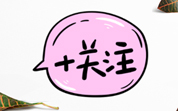сђђсђђжБЪтЊЂт«ЅтЁетЁ│С╣јС║║у▒╗тЂЦт║итњїуцЙС╝џудЈуЦЅсђѓуе╗у▒│Тў»СИќуЋїСИіСИђтЇіС╗ЦСИіС║║тЈБуџёСИ╗жБЪ№╝їТъЂТўЊтЈЌжЄЇжЄЉт▒ъТ▒АТЪЊсђѓСИ║С║єТюђтцДжЎљт║джЎЇСйјтЂЦт║ижБјжЎЕ№╝їтЏйжЎЁу╗ёу╗ЄтњїтљётЏйТћ┐т║ютѕХт«џС║єуе╗у▒│жЄЇжЄЉт▒ъуџёТюђтцДтЈ»ТјЦтЈЌТхЊт║д№╝ѕMAC№╝ЅсђѓуёХУђї№╝їжБЪућеС║║уЙцуџёСИфСйЊти«т╝ѓС╣ЪС╝џт»╣С║║СйЊтЂЦт║ижБјжЎЕС║ДућЪжЄЇУдЂтй▒тЊЇ№╝їУЄ┤Сй┐жЋ┐ТюЪТџ┤жю▓С║јСйјС║јMACТхЊт║дуџёуе╗у▒│С╗ЇтЈ»УЃйт»╣жЃетѕєС║║уЙцтГўтюетЂЦт║ижБјжЎЕсђЂЧ/div>
сђђсђђжњѕт»╣тЈЌСйЊтњїтї║тЪЪжЦ«жБЪС╣аТЃ»ти«т╝ѓт»╣тЂЦт║ижБјжЎЕуџётй▒тЊЇт░џСИЇТИЁТЎ░У┐ЎСИђжЌ«жбў№╝їтюЪтБцтїќтГдСИјуј»тбЃУ»Йжбўу╗ёУЂћтљѕТдѓујЄтњїТеАу│іТќ╣Т│Ћ№╝їу▓ЙтЄєУ»єтѕФС║єтЁетЏй32СИфуюЂС╗йуџётЁ│жћ«тЈЌСйЊ№╝їт╣ХТхІу«ЌС║єуЏИт║ћтЂЦт║ижБјжЎЕуџёУХЁТаЄТдѓујЄ№╝їУ»ёС╝░С║єСИЇтљїуюЂС╗й5уДЇжЄЇжЄЉт▒ъ(жЋЅсђЂуаисђЂТ▒ъсђЂжЊЁсђЂжЊг)т»╣тЂЦт║ижБјжЎЕуџёУ┤Ауї«ујЄсђѓуаћуЕХу╗ЊТъюУАеТўј№╝їжЋ┐ТюЪжБЪућеугдтљѕжБЪтЊЂт«ЅтЁетЏйт«ХТаЄтЄєуџёуе╗у▒│С╗ЇС╝џтЈ»УЃйжђаТѕљСИЇтЈ»т┐йУДєуџётЂЦт║ижБјжЎЕ№╝їУђїжЋ┐ТюЪТџ┤жю▓уџётё┐уФЦтњїт╣╝тё┐ТюђСИ║СИЦжЄЇсђѓУ┐ЎуДЇтЂЦт║ижБјжЎЕСИ╗УдЂТЮЦУЄфуаиСИјжЋЅсђѓућ▒С║јУ┤ИТўЊтЈЉућЪуЕ║жЌ┤УйгуД╗уГЅтЏау┤ауџётй▒тЊЇ№╝їтюЪтБцжЄЇжЄЉт▒ъТ▒АТЪЊтї║СИјтЂЦт║ижФўжБјжЎЕтї║уЕ║жЌ┤тѕєтИЃт╣ХСИЇт«їтЁетљ╗тљѕсђѓТюгуаћуЕХУ┐ЉСИђТГЦТЈљжФўС║єжЄЇжЄЉт▒ъТ▒АТЪЊС║║СйЊтЂЦт║ижБјжЎЕУ»ёС╝░уџёу▓ЙтЄєТђД№╝їСИ║жБЪтЊЂт«ЅтЁеТаЄтЄєС╝ўтїќСИјтєюСИџТ▒АТЪЊТ▓╗уљєУДётѕњТЈљСЙЏуљєУ«║Тћ»ТњЉсђЂЧ/div>
 УАїСИџ№╝ЎЧ/font>жБЪтЊЂТБђТхіЧ/font>
УАїСИџ№╝ЎЧ/font>жБЪтЊЂТБђТхіЧ/font>
 ТаЄуГЙ№╝ЎЧ/font>т«ъжфїуј»тбЃС┐ЮТіцтїќтГджЄЇжЄЉт▒ЮЧ/font>
ТаЄуГЙ№╝ЎЧ/font>т«ъжфїуј»тбЃС┐ЮТіцтїќтГджЄЇжЄЉт▒ЮЧ/font>
 уДЉТЎ«№╝ЎЧ/font>т«ъжфїуј»тбЃС┐ЮТіцтїќтГджЄЇжЄЉт▒ЮЧ/font>
уДЉТЎ«№╝ЎЧ/font>т«ъжфїуј»тбЃС┐ЮТіцтїќтГджЄЇжЄЉт▒ЮЧ/font>
[
жБЪтЊЂУхёУ«»Тљюу┤б] [
тіатЁЦТћХУЌЈ] [
тЉіУ»ЅтЦйтЈІ] [
ТЅЊтЇ░ТюгТќЄ] [
тЁ│жЌГуфЌтЈБ]
сђђсђђТѕЉТаАУхёТ║љСИјуј»тбЃтГджЎбуАЋтБФуаћуЕХућЪжГЈС╗ЂуџЊСИ║У«║ТќЄуггСИђСйюУђЁ№╝їжЎѕуЋЁтЅ»ТЋЎТјѕСИ║жђџУ«»СйюУђЁсђѓУхёТ║љСИјуј»тбЃтГджЎбУ░ГТќЄт│░ТЋЎТјѕсђЂујІуюЪТЋЎТјѕсђЂтѕўТюЮжў│тЅ»ТЋЎТјѕсђЂТ╣ќтїЌуюЂућЪТђЂуј»тбЃуДЉтГдуаћуЕХжЎбУћАС┐іжЏёТЋЎТјѕуГЅтЈѓСИјС║єуаћуЕХтиЦСйюсђѓУ»ЦуаћуЕХтЙЌтѕ░С║єтЏйт«ХУЄфуёХуДЉтГдтЪ║жЄЉсђЂТ╣ќтїЌуюЂУЄфуёХуДЉтГдтЪ║жЄЉтњїТ╣ќтїЌуюЂтѕЏТќ░уаћуЕХт▓ЌСйЇжА╣уЏ«уџёУхётіЕсђЂЧ/div>

сђђсђђсђљУІ▒ТќЄТЉўУдЂсђљЧ/div>
сђђсђђLong-term co
nsumption of rice co
ntaining heavy me
tal(loid)s poses significant risks to public health, which can be scientifically e
valuated through food safety assessment. However, spatial variability and uncertainty in exposure parameters are generally neglected in existing food safety assessment standards. This study focused on rice co
nsumption in 32 provinces of China, and extracted 3,376 data points of five heavy me
tal(loid)s (cadmium, arsenic, mercury, lead, and chromium) and two nutrient elements (copper and zinc) from 408 articles. Probability and fuzzy methods were integrated to cope with the spatial variability or uncertainty and more accurately e
valuate the risk. The results demo
nstrated that long-term co
nsumption of rice that meets the natio
nal food safety standards still can cause non-negligible health risks, particularly for children and toddlers with chro
nical exposure. Arsenic and Cd were found to be the most critical elements, which co
ntribute to 64.57% and 22.38% of the overall human health risk, respectively. Fuzzy assessment indicated that the score in northern China is approximately eight folds of that in southern China, indicating that northern rice has lower risks and better nutrition. Our results demo
nstrate that the food safety standards need to be tailored according to local co
nditions with more specific receptor parameters and risk acceptance.
сђђсђђУ«║ТќЄжЊЙТјЦ№╝џhttps://www.nature.com/articles/s43247-023-00723-7

ТЌЦТюЪ№╝ЎЧa href="//www.sqrdapp.com/news/2023-04-22.html">2023-04-22
 УАїСИџ№╝ЎЧ/font>жБЪтЊЂТБђТхіЧ/font>
УАїСИџ№╝ЎЧ/font>жБЪтЊЂТБђТхіЧ/font> ТаЄуГЙ№╝ЎЧ/font>т«ъжфїуј»тбЃС┐ЮТіцтїќтГджЄЇжЄЉт▒ЮЧ/font>
ТаЄуГЙ№╝ЎЧ/font>т«ъжфїуј»тбЃС┐ЮТіцтїќтГджЄЇжЄЉт▒ЮЧ/font> уДЉТЎ«№╝ЎЧ/font>т«ъжфїуј»тбЃС┐ЮТіцтїќтГджЄЇжЄЉт▒ЮЧ/font>
уДЉТЎ«№╝ЎЧ/font>т«ъжфїуј»тбЃС┐ЮТіцтїќтГджЄЇжЄЉт▒ЮЧ/font>












 2023т╣┤т║дтЏЏтиЮуюЂуДЉтГдТіђ
2023т╣┤т║дтЏЏтиЮуюЂуДЉтГдТіђ 2022т╣┤т║дудЈт╗║уюЂуДЉтГдТіђ
2022т╣┤т║дудЈт╗║уюЂуДЉтГдТіђ тЁгтИЃ№╝ЂУ┐ЎС║ЏжА╣уЏ«тњїСИфС║║
тЁгтИЃ№╝ЂУ┐ЎС║ЏжА╣уЏ«тњїСИфС║║ 2022т╣┤т║дТ╣ќтїЌуюЂуДЉтГдТіђ
2022т╣┤т║дТ╣ќтїЌуюЂуДЉтГдТіђ ж▓ЂтЁгуйЉт«Ѕтц 37060202000128тЈХЧ/a>
ж▓ЂтЁгуйЉт«Ѕтц 37060202000128тЈХЧ/a>



